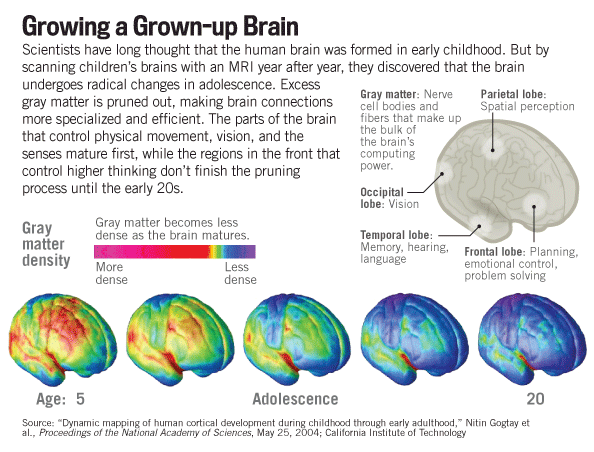F. Nicholas (Nick) Jacobs, FACHE
HealingHospitals.com
- The Risk Management and Patient Safety Institute 2011 National Conference
The audience for these upcoming presentations and meetings will consist of risk and quality managers, patient safety officers, and hospital CEOs .
Seattle, WA – May, 2011
- National Leadership Series: Improving Operations and Leadership Success
The Patient Safety and Clinical Pharmacy Services Collaborative
Maine – March, 2011
- National Institutes of Health’s National Cancer Institute (NCI)
Cancer COMM 2.0: Cancer Communication in the Digital Age
Washington, DC – December , 2010|
- Waverly Health Center Strategic Excellence Conference
Waverly, IA – October, 2010
- Planetree 2010 National Conference
Denver, CO – October, 2010
- The Risk Management and Patient Safety Institute National 2010 Conference
Lansing, MI – August, 2010
- Planetree 2009 National Conference
Baltimore, MD – October, 2009
- Lake Erie Regional Nurses Event
Redesigning Patient Experiences
Toledo, OH – May 7, 2010
- Central Peninsula Hospital, Director’s Summit
Soldotna, AK – November , 2010
- Association for Healthcare Philanthropy Pacific Regional Conference
Riding the Wave to Success: Best Practices in Philanthropy
San Diego, CA – April, 2009
- Second Annual World Health Care Congress – Leadership Summit
Redesigning the Patient Experience
Orlando, FL – March, 2009
- Carolinas Healthcare Public Relations & Marketing Society
Getting the Word Out: Blogs, Planetree, Web 2.0 and Employer of Choice
Charleston, SC – November, 2008
- Patient-Centered Care CEO Summit
Maximizing HCAHPS Scores
Chicago, IL – October, 2008
- 2008 Planetree Annual Conference
Becoming a Planetree Hospital
Chicago, IL – October, 2008
- New York Association of Homes & Services for the Aging Annual Conference
Talking the Talk, Walking, the Walk: Becoming an Employer of Choice
Syracuse, NY – September, 2008
- HFMA Appalachian Chapter of Central Pennsylvania Education Session
Positive Economic Ramifications Generated from Creatively Changing the Hospital Environment
Harrisburg, PA – October, 2008
- AHA / Health Forum 6th Annual Conference on Integrative Medicine for Health Care Organizations
The Healing Hillside
Phoenix, AZ – May, 2008
- Pennsylvania Newspaper Association / IAMA
Leadership, Unlimited Possibilities
Seven Springs, PA – April, 2008
- Maine Primary Care Association
The Future of Healthcare
Portland, ME – November, 2007
- World Congress on Cardiology Conference
The Impact of Behavior Modification on Heart Disease
Belgrade, Serbia – October, 2007
- Iowa Hospital Association Annual Meeting
Healing Environments in Hospitals: Results of an Eight Hospital Creating Case Study
DesMoines, IA – October, 2007
- Summit Health Board Meeting – Building a Healing Environment
The Planetree Concept and Design
Chambersburg, PA – September, 2007
- Consumer Health World Conference
HOSPITALS & PROVIDERS: Trends, Strategies & Case Studies
Chicago, IL – September, 2007
- Consumer Health World Conference
+ Open Health Care: Learning to Live in the Brave New World – Openness, Controversy and Crises
+ Management in Blogs and Social Media
Las Vegas, NV – April, 2007
- Integrative Medicine for Health Care Organizations
Creating Healing Environments in Hospitals: Results of an Eight Hospital Case Study
San Diego, CA– April, 2007
- Physicians’ Reciprocal Insurers 6th Annual PRI Seminar
Presenter/Keynote Speaker
New York, NY – November, 2006
- Cigna Fortune 100 Conference
Guest Speaker
Fort Lauderdale, FL – February 2006
- Quality Insights of Pennsylvania-Public Reporting Collaborative
Keynote Speaker
King of Prussia, PA & Harrisburg, PA – February, 2005
- National Interdisciplinary Breast Center Conference
Overview of the Windber/Walter Reed Army Medical Center Partnerships
Las Vegas, NV – February, 2005
- Disease Management Congress and Exposition
Integrative and Cardiovascular Health: The Windber Experience
San Diego, CA – September, 2003
- Teradata Partners Conference
The Windber Research Institute: Advancing Frontiers, Finding Cures
Seattle, WA – September, 2003
- Highmark Blue Cross/Blue Shield CEO Conference
Keynote Speaker
Nemacolin, PA – September, 2002
- United Nations Conference – EATSET International Biomedical Seminar/Transfusion Workshop
Keynote Speaker
Abuja, Nigeria – August, 2002
Voluntary Hospitals of America, Board of Directors Meeting & Symposium
The Future of Healthcare
State College, PA – June, 2001
- Pennsylvania Rural Health Conference
Innovation & Transformation: Today’s Windber Medical Center
State College, PA – June, 2001
- AmeriNet Central, Spring CEO Forum
Bridging the Gap with Acute and Nonacute Care
Warrendale, PA – May, 2001
- Johnstown Chamber of Commerce Leadership Conference
Managing Change in the Workplace
University of Pittsburgh (UPJ campus)– December, 2000
- Hospital Council of Western Pennsylvania, Board of Directors
Inventing the Future: The Reorganization of Windber Medical Center
Cranberry, PA – November, 2000
- AARP Senior Community Service Employment Program & National Shriners Leadership
Volunteerism & Leadership
Johnstown, PA – October and November, 2000
- American Association of University Women
Dr. Dean Ornish Program on Heart Disease Reversal
Johnstown, PA – September, 2000
- The Hospital & Healthsystem Association of Pennsylvania (HAP)
A Creative Approach to Holistic Care: Forming an Innovative Healing Environment
Harrisburg, PA – August, 2000
- The Hospital & Healthsystem Association of Pennsylvania (HAP) – Council for Small Hospitals
A Creative Approach to Holistic Care: Forming an Innovative Healing Environment
State College, PA – June, 2000
- U.S. Dept. of Health & Human Services (HHS) – Administration on Aging (AoA)
Improving Access for Health: The Center for Life
Chicago, IL – May, 2000
- Pennsylvania Department of Aging
Model Geriatric Health Center Demonstration: Overview and Presentations
Grantville, PA – May, 2000
- Hospital Council of Western Pennsylvania
A Creative Approach to Holistic Care. Forming an Innovative Healing Environment
Warrendale, PA – April, 2000
- American College of Health Care Executives (ACHE)
A Creative Approach to Holistic Care: Forming an Innovative Healing Environment
Chicago, IL – March, 2000
- American Society on Aging
PA’s Primary Care and Senior Center Demo: What We Planned and What Actually Happened
San Diego, CA – March, 2000
1
F. Nicholas (Nick) Jacobs, FACHE
HealingHospitals.com
Presentations
? The Risk Management and Patient Safety Institute 2011 National Conference
The audience for these presentations and meetings will consist of risk and quality managers,
patient safety officers, and hospital CEOs .
Seattle, WA – May, 2011
? National Leadership Series: Improving Operations and Leadership Success
The Patient Safety and Clinical Pharmacy Services Collaborative
Maine – March, 2011
? National Institutes of Health’s National Cancer Institute (NCI)
Cancer COMM 2.0: Cancer Communication in the Digital Age
Washington, DC – December , 2010
? Waverly Health Center Strategic Excellence Conference
Waverly, IA – October, 2010
? Planetree 2010 National Conference
Denver, CO – October, 2010
? The Risk Management and Patient Safety Institute National 2010 Conference
Lansing, MI – August, 2010
? Planetree 2009 National Conference
Baltimore, MD – October, 2009
? Lake Erie Regional Nurses Event
Redesigning Patient Experiences
Toledo, OH – May 7, 2010
? Central Peninsula Hospital, Director’s Summit
Soldotna, AK – November , 2010
? Association for Healthcare Philanthropy Pacific Regional Conference
Riding the Wave to Success: Best Practices in Philanthropy
San Diego, CA – April, 2009
2
? Second Annual World Health Care Congress – Leadership Summit
Redesigning the Patient Experience
Orlando, FL – March, 2009
? Carolinas Healthcare Public Relations & Marketing Society
Getting the Word Out: Blogs, Planetree, Web 2.0 and Employer of Choice
Charleston, SC – November, 2008
? Patient-Centered Care CEO Summit
Maximizing HCAHPS Scores
Chicago, IL – October, 2008
? 2008 Planetree Annual Conference
Becoming a Planetree Hospital
Chicago, IL – October, 2008
? New York Association of Homes & Services for the Aging Annual Conference
Talking the Talk, Walking, the Walk: Becoming an Employer of Choice
Syracuse, NY – September, 2008
? HFMA Appalachian Chapter of Central Pennsylvania Education Session
Positive Economic Ramifications Generated from Creatively Changing the Hospital Environment
Harrisburg, PA – October, 2008
? AHA / Health Forum 6th Annual Conference on Integrative Medicine for Health Care
Organizations
The Healing Hillside
Phoenix, AZ – May, 2008
? Pennsylvania Newspaper Association / IAMA
Leadership, Unlimited Possibilities
Seven Springs, PA – April, 2008
? Maine Primary Care Association
The Future of Healthcare
Portland, ME – November, 2007
? World Congress on Cardiology Conference
The Impact of Behavior Modification on Heart Disease
Belgrade, Serbia – October, 2007
3
? Iowa Hospital Association Annual Meeting
Healing Environments in Hospitals: Results of an Eight Hospital Creating Case Study
DesMoines, IA – October, 2007
? Summit Health Board Meeting – Building a Healing Environment
The Planetree Concept and Design
Chambersburg, PA – September, 2007
? Consumer Health World Conference
HOSPITALS & PROVIDERS: Trends, Strategies & Case Studies
Chicago, IL – September, 2007
? Consumer Health World Conference
o Open Health Care: Learning to Live in the Brave New World – Openness, Controversy and
Crises
o Management in Blogs and Social Media
Las Vegas, NV – April, 2007
? Integrative Medicine for Health Care Organizations
Creating Healing Environments in Hospitals: Results of an Eight Hospital Case Study
San Diego, CA– April, 2007
? Physicians’ Reciprocal Insurers 6th Annual PRI Seminar
Presenter/Keynote Speaker
New York, NY – November, 2006
? Cigna Fortune 100 Conference
Guest Speaker
Fort Lauderdale, FL – February 2006
? Quality Insights of Pennsylvania-Public Reporting Collaborative
Keynote Speaker
King of Prussia, PA & Harrisburg, PA – February, 2005
? National Interdisciplinary Breast Center Conference
Overview of the Windber/Walter Reed Army Medical Center Partnerships
Las Vegas, NV – February, 2005
? Disease Management Congress and Exposition
Integrative and Cardiovascular Health: The Windber Experience
San Diego, CA – September, 2003
4
? Teradata Partners Conference
The Windber Research Institute: Advancing Frontiers, Finding Cures
Seattle, WA – September, 2003
? Highmark Blue Cross/Blue Shield CEO Conference
Keynote Speaker
Nemacolin, PA – September, 2002
? United Nations Conference – EATSET International Biomedical Seminar/Transfusion Workshop
Keynote Speaker
Abuja, Nigeria – August, 2002
? Voluntary Hospitals of America, Board of Directors Meeting & Symposium
The Future of Healthcare
State College, PA – June, 2001
? Pennsylvania Rural Health Conference
Innovation & Transformation: Today’s Windber Medical Center
State College, PA – June, 2001
? AmeriNet Central, Spring CEO Forum
Bridging the Gap with Acute and Nonacute Care
Warrendale, PA – May, 2001
? Johnstown Chamber of Commerce Leadership Conference
Managing Change in the Workplace
University of Pittsburgh (UPJ campus)– December, 2000
? Hospital Council of Western Pennsylvania, Board of Directors
Inventing the Future: The Reorganization of Windber Medical Center
Cranberry, PA – November, 2000
? AARP Senior Community Service Employment Program & National Shriners Leadership
Volunteerism
Johnstown, PA – October and November, 2000
? American Association of University Women
Dr. Dean Ornish Program on Heart Disease Reversal
Johnstown, PA – September, 2000
5
? The Hospital & Healthsystem Association of Pennsylvania (HAP)
A Creative Approach to Holistic Care: Forming an Innovative Healing Environment
Harrisburg, PA – August, 2000
? The Hospital & Healthsystem Association of Pennsylvania (HAP) – Council for Small Hospitals
A Creative Approach to Holistic Care: Forming an Innovative Healing Environment
State College, PA – June, 2000
? U.S. Dept. of Health & Human Services (HHS) – Administration on Aging (AoA)
Improving Access for Health: The Center for Life
Chicago, IL – May, 2000
? Pennsylvania Department of Aging
Model Geriatric Health Center Demonstration: Overview and Presentations
Grantville, PA – May, 2000
? Hospital Council of Western Pennsylvania
A Creative Approach to Holistic Care. Forming an Innovative Healing Environment
Warrendale, PA – April, 2000
? American College of Health Care Executives (ACHE)
A Creative Approach to Holistic Care: Forming an Innovative Healing Environment
Chicago, IL – March, 2000
? American Society on Aging
PA’s Primary Care and Senior Center Demo: What We Planned and What Actually Happened
San Diego, CA – March, 2000

 Until recently, the food supply was primarily in the hands of the world markets which were primarily monitored and sometimes driven by the United Nations’ World Food Program, but because of recent shortages and population growth, several countries have taken it upon themselves to secure their food supply in nontraditional ways. We are seeing unprecedented land grabs in developing countries, and water grabs from geographies where the end result creates shortages and where grain is being directly purchased from U.S. farmers. All of this is contributing to a global power struggle for food security.
Until recently, the food supply was primarily in the hands of the world markets which were primarily monitored and sometimes driven by the United Nations’ World Food Program, but because of recent shortages and population growth, several countries have taken it upon themselves to secure their food supply in nontraditional ways. We are seeing unprecedented land grabs in developing countries, and water grabs from geographies where the end result creates shortages and where grain is being directly purchased from U.S. farmers. All of this is contributing to a global power struggle for food security.








